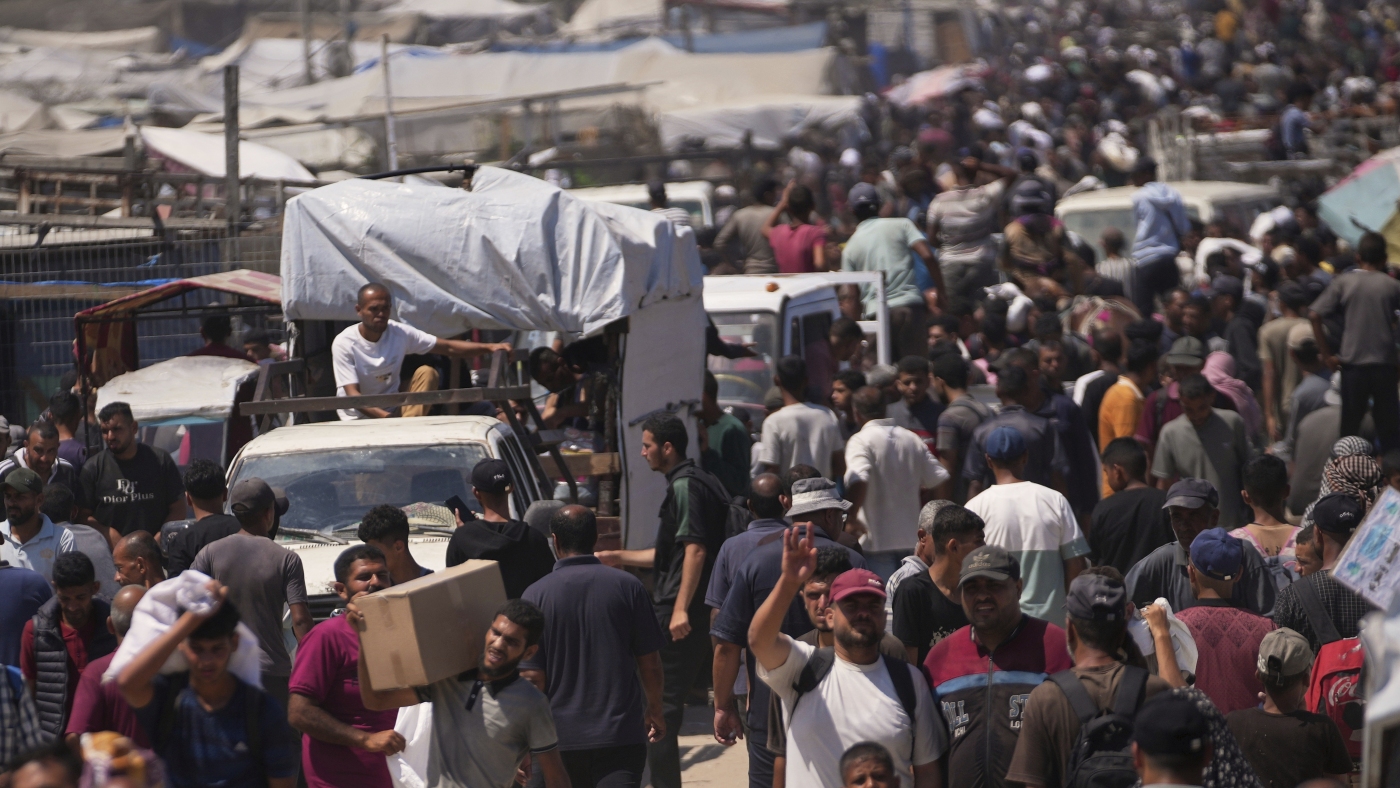Tragedy at Gaza Aid Sites: A Deep Dive into the Recent Shootings
The Gaza Strip has once again been a scene of tragic violence, with at least eight Palestinians killed and dozens wounded in shootings near Israeli and U.S.-supported humanitarian aid distribution centers. This latest event has drawn global attention due to its timing, location, and implications on the humanitarian crisis in the region. Examining the circumstances around these shootings reveals a complex interplay of conflict, aid distribution, and escalating tensions that shape the daily realities of Gazan civilians.
—
Context and Details of the Incident
The shooting occurred near internationally supported aid sites in southern Gaza, specifically around Khan Younis and Rafah, areas that have been focal points for food and humanitarian aid distribution amid ongoing conflict. Witnesses reported that Israeli forces opened fire around dawn on desperate crowds of Palestinians attempting to access two aid distribution points operated by the Gaza Humanitarian Foundation (GHF), an organization backed by both Israel and the United States. This organization was recently introduced to replace prior assistance frameworks traditionally managed by the United Nations.
Eyewitness accounts and health officials consistently report at least eight Palestinians killed in this incident, with many more injured, indicating not only the lethal consequences of these confrontations but also the mass desperation for survival resources such as food and aid. The shooting is part of a disturbing pattern: over 100 Palestinians have reportedly been killed since new aid sites were established, illustrating the precarious balance between humanitarian relief efforts and the security concerns held by Israeli forces.
—
The Humanitarian Dimension: Aid Amidst Conflict
The presence of U.S.-supported aid sites underscores the international effort to mitigate the devastating effects of blockades, hostilities, and economic hardship in Gaza. Access to food, medical supplies, and basic humanitarian assistance is critically limited in the Strip, where a majority of the population depends on such aid for survival.
However, the violent incidents near these aid points highlight the challenges faced by such relief operations. The clash between the need to safely provide assistance and the enforcement of security protocols by Israeli forces often results in conflict zones that endanger civilians seeking help. The complex operational environment means aid distribution centers themselves may become flashpoints, trapping vulnerable populations in dangerous situations.
—
Security Concerns and Operational Challenges
Israeli military forces justify their actions by citing security threats, asserting that measures, including opening fire, respond to perceived risks such as gatherings that might escalate or attempts to breach security perimeters. Official Israeli statements have sometimes indicated that in these incidents, troops fired after hostile actions were seen or anticipated near the aid distribution points.
However, the high civilian casualty rate has sparked widespread condemnation and raises questions about proportionality and the adequacy of crowd control measures. Critics argue that shooting at desperate civilians trying to access life-saving aid exacerbates humanitarian suffering and undermines efforts to stabilize the situation on the ground. The conundrum between securing borders and safeguarding humanitarian activities remains a persistent and volatile aspect of the Gaza conflict.
—
Broader Implications: Shaping Public Perception and Regional Stability
These shootings not only claim lives but also inflame tensions locally and internationally. For Palestinians in Gaza, incidents at aid sites deepen mistrust toward Israeli authorities and international actors involved in the conflict. The visibility of these events, disseminated through global news outlets, shapes public discourse, potentially swaying international opinion and diplomatic approaches.
The deaths at aid sites can also hinder relief work, as fear deters people from approaching distribution centers, leaving vulnerable populations worse off. In the absence of effective security guarantees, humanitarian organizations face operational dilemmas, risking either restricting aid out of safety concerns or continuing work under hazardous conditions.
Furthermore, the event revives historical comparisons to other humanitarian crises where aid zones turned into conflict hotspots, exposing what some describe as “no-win” situations for civilians caught amid political and military struggles.
—
Conclusion: Navigating a Path Forward Amid Crisis
The shooting incident near Israeli and U.S.-supported aid sites in Gaza casts a stark light on the human cost of one of the world’s most enduring conflicts. At least eight Palestinians killed and many more wounded while seeking aid encapsulate the tragic intersection of humanitarian need and military tension.
Addressing this issue requires a careful recalibration of how humanitarian assistance is delivered in conflict zones, ensuring that aid does not become a target or trigger further violence. It calls for renewed dialogue among local authorities, international organizations, and military forces to establish robust protocols that prioritize civilian safety and uphold humanitarian principles.
Ultimately, the lives lost near Gaza’s aid sites are a powerful call to re-examine not just immediate security measures, but broader strategies that might break cycles of violence and open avenues toward lasting peace and relief for vulnerable populations. The urgency to protect human dignity amid conflict remains a pressing challenge the global community must confront with empathy, resolve, and innovative solutions.


